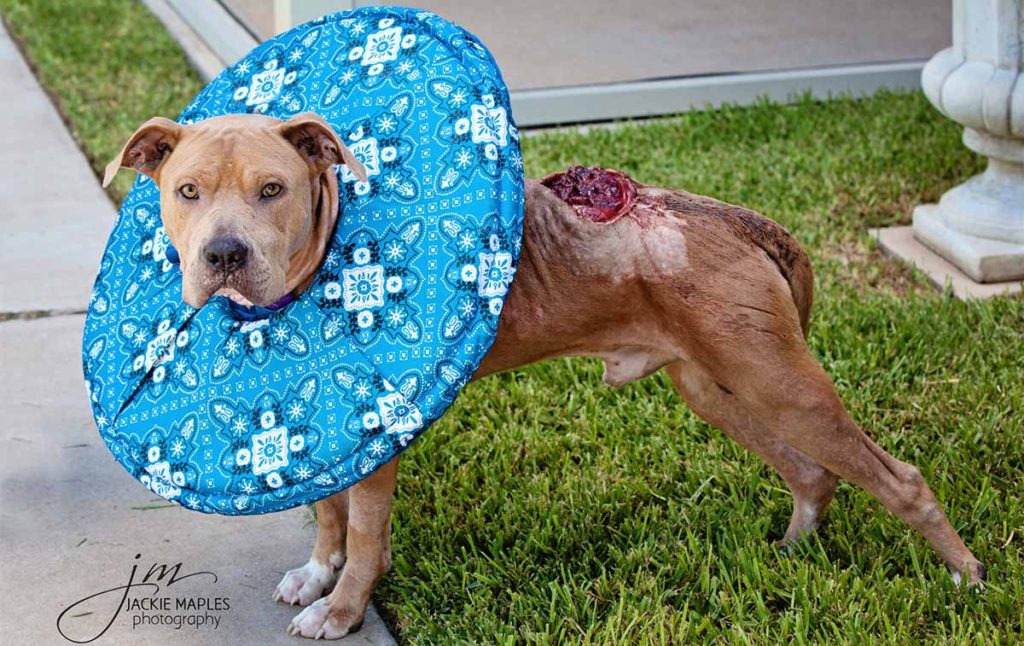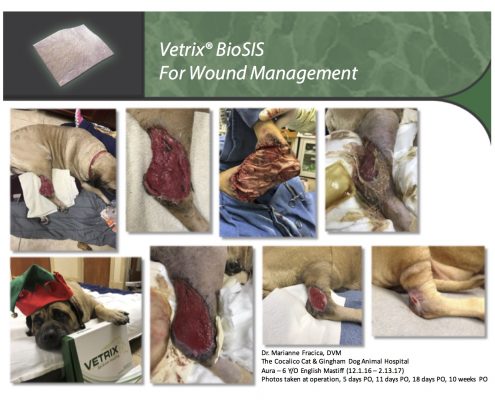Top 4 Tips For Using BioSIS For Wound Care
Vetrix® BioSIS is a bioresorbable device derived from porcine small intestinal submucosa. Vetrix® BioSIS acts as a scaffold and works with the patient’s natural healing process to replace and repair damaged tissue. Although BioSIS is extremely easy to handle, we’ve identified four treatment tips to ensure the best outcome for your wound care patient.
Create as many intimate points of contact with the wound bed as possible.
BioSIS functions as a naturally occurring scaffold into which the patient’s cells migrate and integrate. Needless to say, blood supply is key. When implanting BioSIS on a wound, we advise suturing the graft in place using a continuous circumferential horizontal mattress technique. By using this technique we ensure many points of connection with healthy blood supply. Also, by using a horizontal mattress technique, we can even slide the edges of the BioSIS graft underneath undermined tissue edges, again ensuring that we have healthy blood supply from all edges.
Next, we advise “tacking” the graft in place with several independent sutures throughout the graft. This also ensures we have intimate contact between the graft and the wound bed underneath. See below image for illustration.
Fenestrate if needed.
With larger wounds, it can be beneficial to fenestrate the BioSIS graft following implantation. This allows exudate to move through the graft while keeping the graft flush on the wound bed. It also prevents the occurrence of hematoma. Dried blood elicits an inflammatory response, and counteracts the mechanism of action for the BioSIS graft – modulating inflammation for better healing.
Bandage with a non-adherent dressing, and carefully change the bandage.
BioSIS works by providing a scaffold that is eventually replaced by organized healthy tissue. As cells migrate into the graft, they will lay down their own collagen matrix, and begin to replace the BioSIS graft. Across the wound, BioSIS is resorbed at different rates. This is extremely important to know because as we change the bandaging, we want to leave as much of the remaining matrix intact as possible. Using a non-adherent bandage, and changing the bandage delicately, allows the remaining portions of the graft to stay in place.
Additionally, as the graft is incorporated into the wound, it will turn caramel colored. This typically happens within the first 6-10 days of implantation. DO NOT SCRAPE THIS OFF. It is often tempting to thoroughly clean the wound within the first week, however, it is imperative to leave this remaining matrix in place to ensure the best healing results. Simply irrigate with saline, and cover with another non-adherent bandage.
Allow functioning wound site.
Our extensive research on the use of BioSIS as a biological scaffold shows that a functioning site heals faster, and better, than an immobile one. What we mean is that the migrating cells receive direction from the surrounding matrix. If that matrix is stagnant and does not influence the cells properly, proper healing will not occur. For more information on the importance of function in the healing process, see this publication that uses a repeated study on a canine bladder wall model.
This important note about the use of BioSIS in wound healing should greatly influence how the patient is bandaged. Although it is advised that an open wound should be covered, we want to do so in a way that does not prohibit mobility of the patient. Movement is key to the formation of organized, healthy tissue.
With these four tips in using BioSIS for wound care under your belt, you’ll be ready to provide the best in wound care for your patients.




